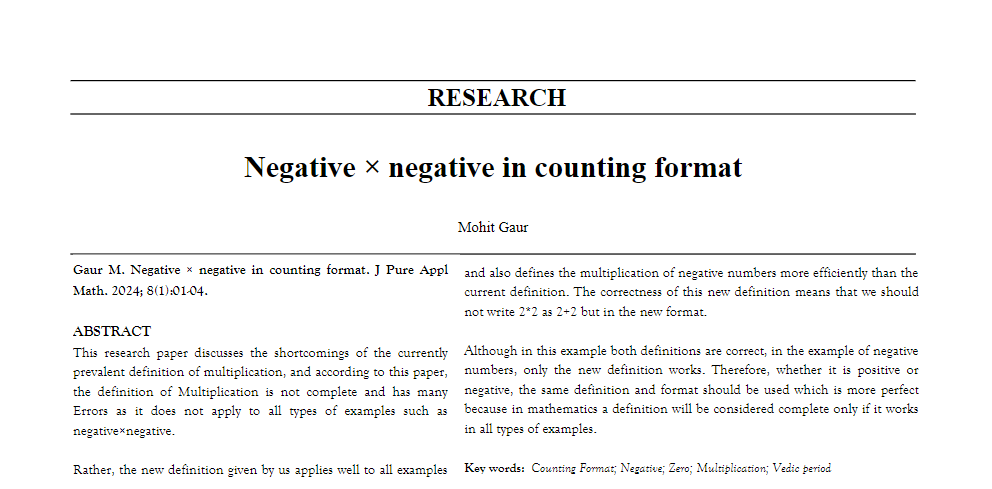Negative Multiply negative in counting format. Perfect Definition of Multiplication and Zero
Is the definition of multiplication given by all accepted dictionaries of mathematics really accurate? Does it work in all types of instance .I think it’s totally rotten when we multiply negative numbers. According to the mathematics of the vedic period, multiplication is somewhat different from modern mathematics. I found the real meaning of multiplication by doing deep research on brahmagupta’s mathematics, vedic mathematics, rashi vigyan, jyotish and other ganit shastras. apart from this, we have also explained the correct definition of zero and its actual form which is mentioned in Indian Sanskrit texts. Through the real property and basic nature of zero, we have also given a new dimension to understanding the basics of negative and positive number’s operation. the current definition of multiplication is not complete and has many errors as it does not apply to all types of examples such as negative*negative. Let’s see how !
Abstract (English)
This research paper discusses the shortcomings of the currently prevalent definition of multiplication, and according to this paper, the definition of Multiplication is not complete and has many Errors as it does not apply to all types of examples such as negative×negative.Rather, the new definition given by us applies well to all examples and also defines the multiplication of negative numbers more efficiently than the current definition. The correctness of this new definition means that we should not write 2*2 as 2+2 but in the new format.
Although in this example both definitions are correct, in the example of negative numbers, only the new definition works. Therefore, whether it is positive or negative, the same definition and format should be used which is more perfect because in mathematics a definition will be considered complete only if it works in all types of examples











